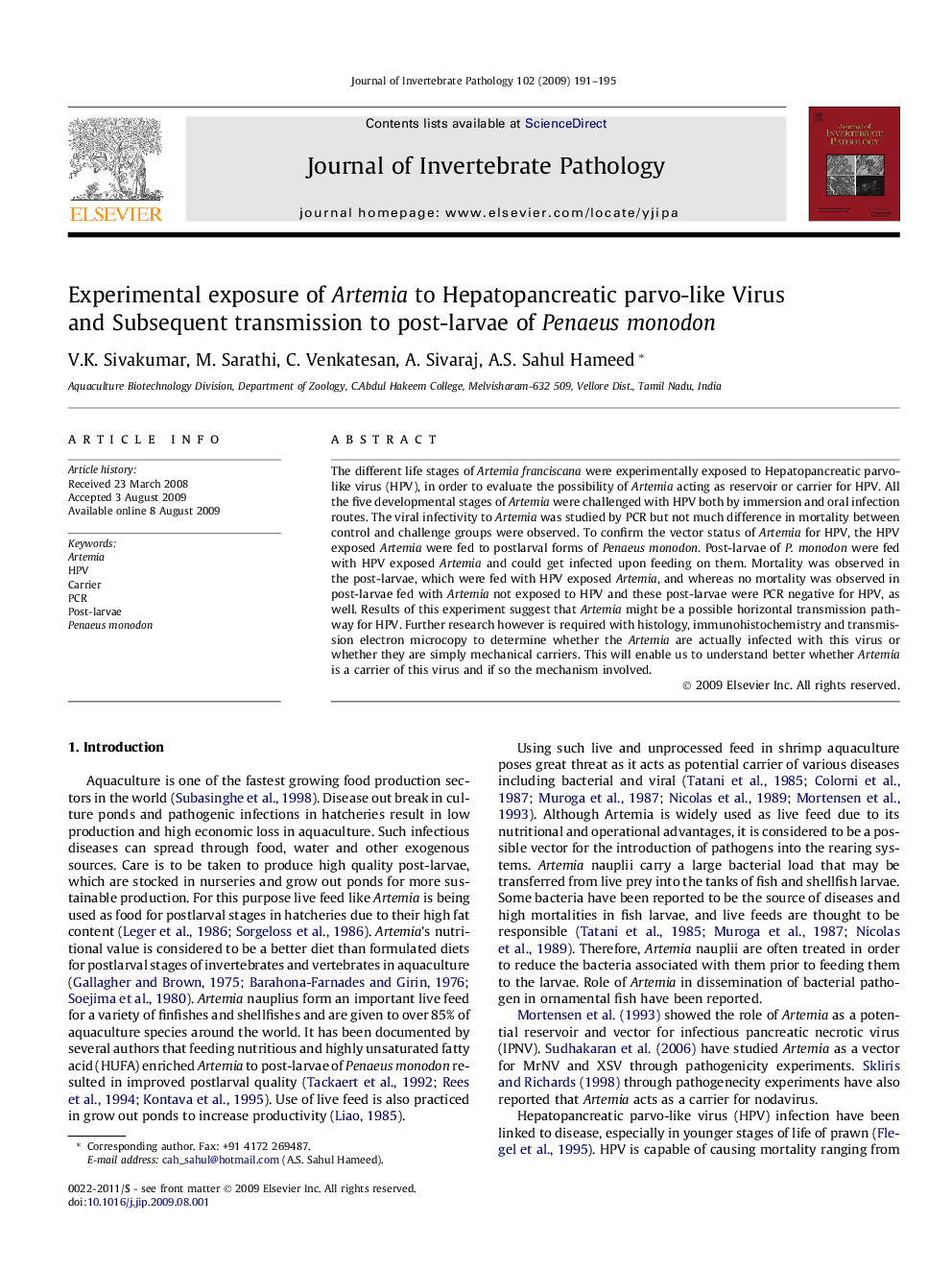| Article ID | Journal | Published Year | Pages | File Type |
|---|---|---|---|---|
| 4558190 | Journal of Invertebrate Pathology | 2009 | 5 Pages |
The different life stages of Artemia franciscana were experimentally exposed to Hepatopancreatic parvo-like virus (HPV), in order to evaluate the possibility of Artemia acting as reservoir or carrier for HPV. All the five developmental stages of Artemia were challenged with HPV both by immersion and oral infection routes. The viral infectivity to Artemia was studied by PCR but not much difference in mortality between control and challenge groups were observed. To confirm the vector status of Artemia for HPV, the HPV exposed Artemia were fed to postlarval forms of Penaeus monodon. Post-larvae of P. monodon were fed with HPV exposed Artemia and could get infected upon feeding on them. Mortality was observed in the post-larvae, which were fed with HPV exposed Artemia, and whereas no mortality was observed in post-larvae fed with Artemia not exposed to HPV and these post-larvae were PCR negative for HPV, as well. Results of this experiment suggest that Artemia might be a possible horizontal transmission pathway for HPV. Further research however is required with histology, immunohistochemistry and transmission electron microcopy to determine whether the Artemia are actually infected with this virus or whether they are simply mechanical carriers. This will enable us to understand better whether Artemia is a carrier of this virus and if so the mechanism involved.
